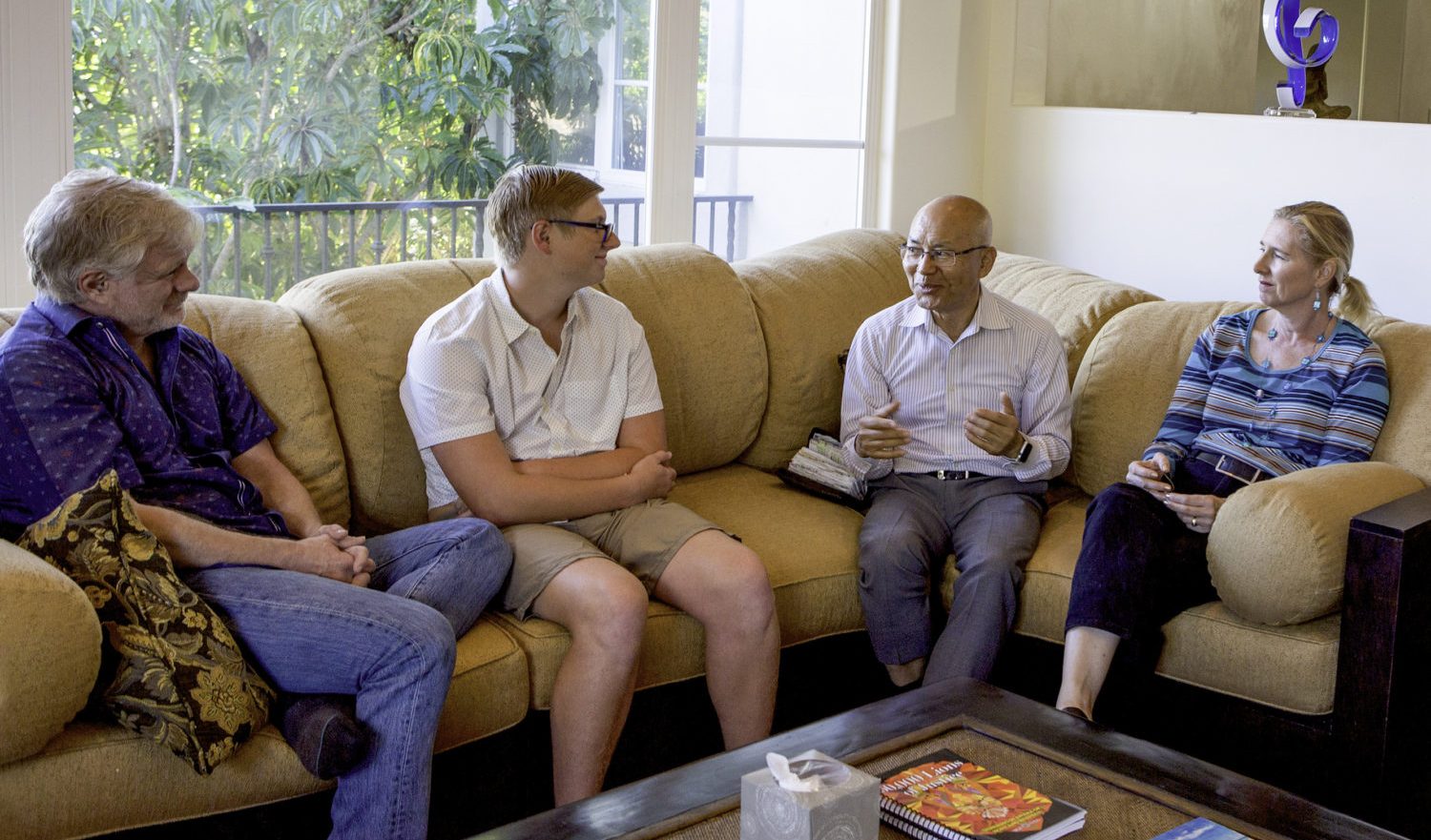With “home visits” and “personal encouragement” as the bywords for the SGI-USA in 2019, this World Tribune series features SGI-USA leaders who discuss their personal experiences of being home visited, home visiting others and the lessons they’ve learned.
by Danny Nagashima
SGI-USA Executive Advisor
During a tour of the J. Paul Getty Museum in Los Angeles in 1974, SGI President Ikeda stopped to admire the painting “Man With a Hoe” (circa 1860–1862) by Jean-François Millet. It depicts a hard-working man courageously engaged in backbreaking work of turning rocky earth into a productive field. I strongly feel that this painting represents Sensei’s heart—a spirit of going to the people, struggling with the people and always asking himself what more he can do for the people.
In volume two of The New Human Revolution, President Ikeda writes: “Giving guidance to individuals or families is an extremely time-consuming, inconspicuous activity, but it serves to nurture the ‘roots’ of people’s faith. Only when a tree’s roots spread and sink down deep into the ground can it grow toward the heavens and bring forth green leaves and branches.
“In much the same way, the source of all development in the realm of kosen-rufu lies in sharing the sufferings of the members, answering their questions so as to relieve them of any doubts, and making it possible for them to joyously exert themselves in faith filled with confidence and hope” (p. 161).
Sensei’s example of genuine respect, appreciation and care for each person is the reason that the SGI’s network of Buddhist humanism has spread to 192 countries and territories.
Q: What are three things you keep in mind as you prepare for home visits?
- I find out the person’s condition and situation. Usually, they’re confronting some difficulty or challenge, so I always ask myself, How can I provide the proper encouragement and guidance for their circumstances?
- I sincerely chant Nam-myoho-renge-kyo for the person’s victory and that they can overcome their obstacles, changing poison into medicine and gaining confidence in their Buddhist practice.
- I try to go on the home visit with the member’s local leader so they can continue to be supported. Ultimately,
I want to do everything I can to help them connect with President Ikeda and the Gohonzon, to help them develop conviction that they can beat their problem and win.
Q: How did you learn the Soka Gakkai spirit to treasure the person in front of you?
In the tumultuous year of 1979 [when President Ikeda stepped down from his position as third Soka Gakkai president due to the machinations of the Nichiren Shoshu priests], his sole concern was for the members. Since the priesthood barred him from attending meetings and forbade his guidance from appearing in the Soka Gakkai newspaper, Sensei focused on home visiting members and encouraging them, one by one.
On one of these visits, he wanted to show his deep appreciation for a pioneer member’s efforts for kosen-rufu, and he spent several hours with her and her family. His example serves as inspiration to all of us throughout the SGI-USA as we strive to deepen our culture of care.
Q: What’s the most important thing in doing home visits?
Whenever I visit a member, I do gongyo with them and pray for their happiness and victory. I ask them what their struggles are and what they want to see in the SGI. Listening well during our home visits is so crucial; the majority of the time should be spent finding out about the member, what they want and need to be supported. Then, I can do my best to connect them to the Gohonzon, Sensei and Nichiren Daishonin’s writings.
Sometimes the impact of doing home visits is beyond our comprehension. The person we’re visiting may be confronting a life-or-death situation, and our efforts to care for them can serve as a beacon of hope, helping them depart from their sufferings and toward a new life.
Q: What makes a home visit victorious?
When I was 69, I was deeply touched by President Ikeda’s encouragement to me to “have hope and glory.” At that time, I was preparing for open-heart surgery, and because of his words, I set goals for the next 30 years of my life, toward the age of 100. From deepening my vow with my mentor, I gained a tremendous sense of hope for my future.
Just as President Ikeda says, personal encouragement can “nurture the ‘roots’ of people’s faith.” When I’m encouraging someone on a visit, I ask myself, How much hope can I instill in this person’s life based on their awakening of their mission and vow for kosen-rufu with Sensei?
The time we have on a home visit is limited, but as long as the individual awakens to their unique mission and strengthens their bond with the mentor, they’ll surely be victorious.
You are reading {{ meterCount }} of {{ meterMax }} free premium articles

